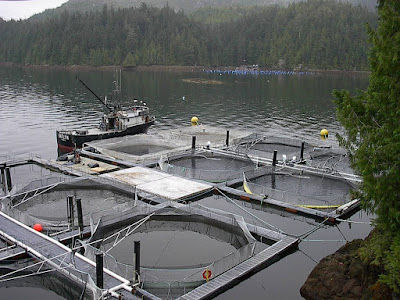AQUACULTURE

Aquaculture : Aquaculture has been defined by the Japanese Resource Council, Science and Technology Agency as under: “Aquaculture is an industrial process of raising aquatic organisms upto final commercial production within properly partitioned aquatic areas, controlling the environmental factors and administering the life history of the organism positively and it has to be considered as an independent industry from the fisheries hitherto.” Objectives of Aquaculture : Having defined aquaculture and mentioned some of the reasons which have contributed to imparting a fillip to aquaculture in recent times, it is proper to state the objectives of aquaculture. These are: Production of protein rich, nutritive, palatable and easily digestible human food benefiting the whole society through plentiful food supplies at low or reasonable cost. Providing new species and strengthening stocks of existing fish in natural and man-made water-bodies through artificial recruitment and...
